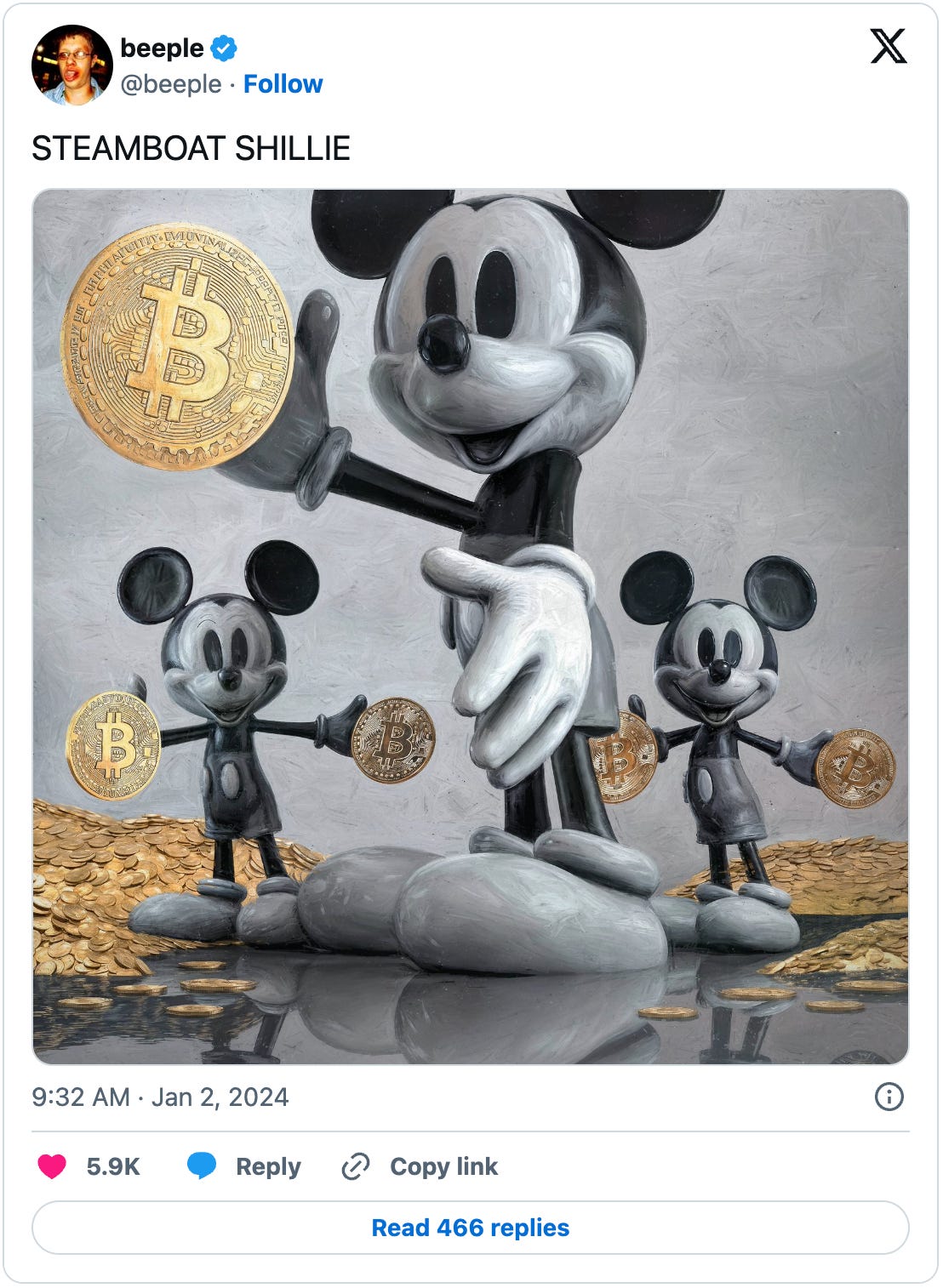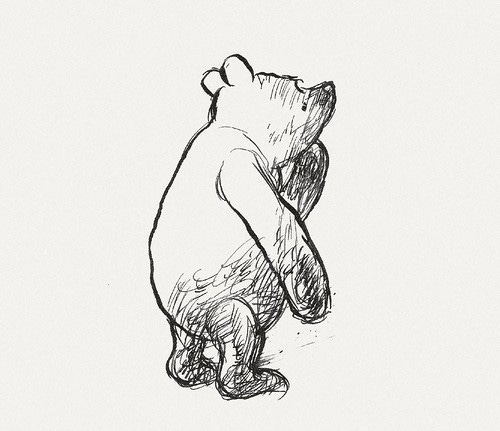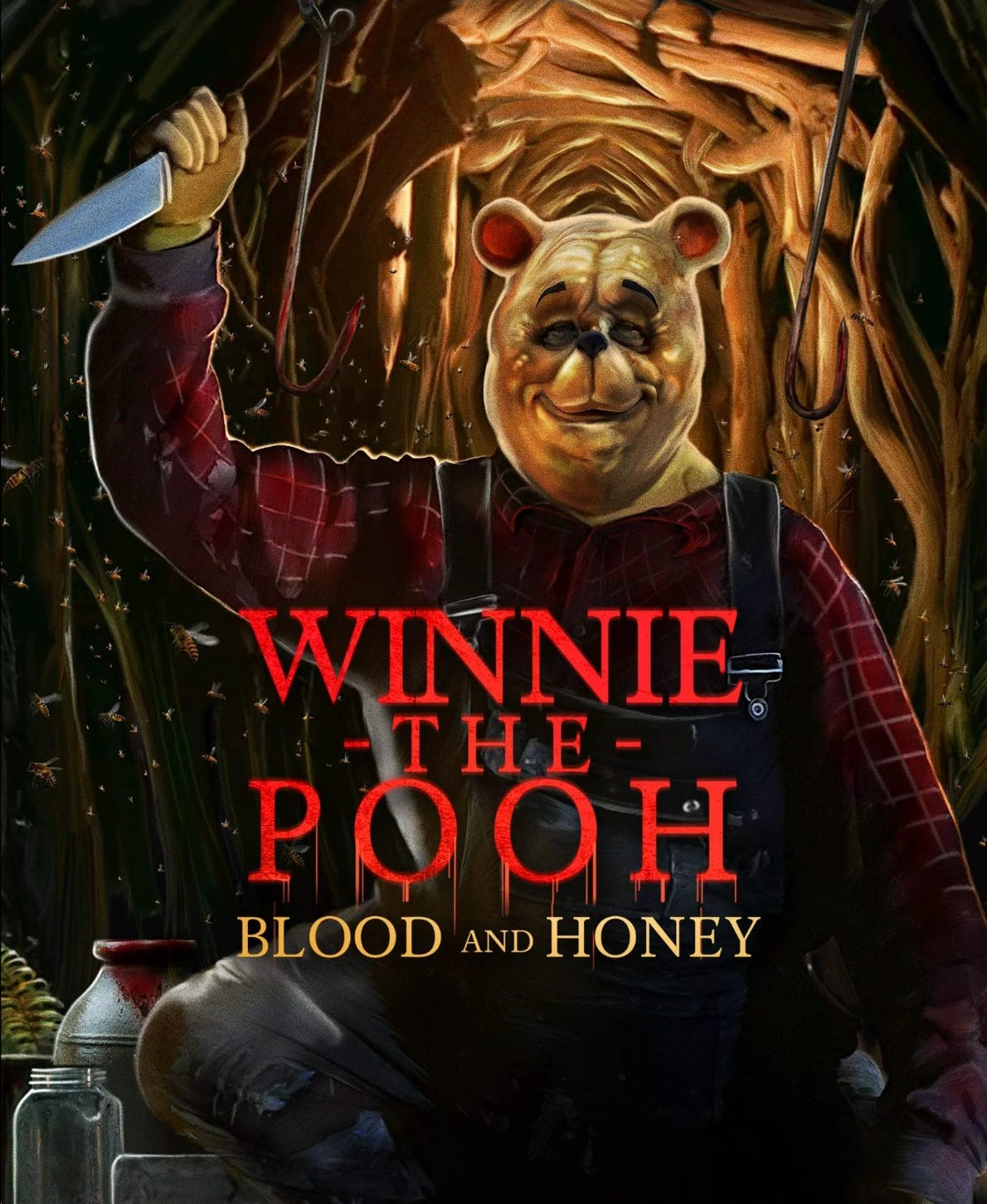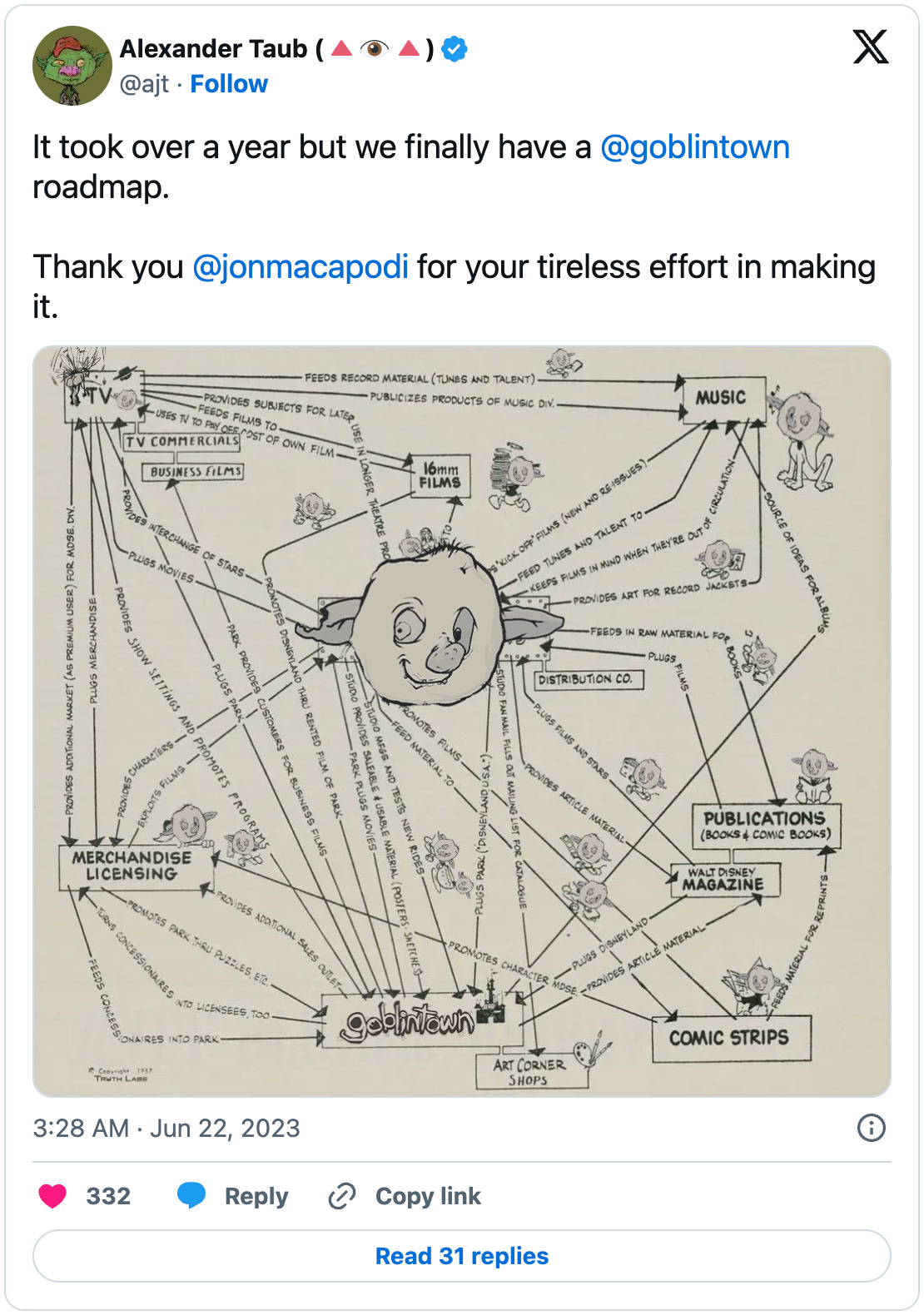Disney LOST Its Mickey Mouse Rights
Mickey NFTs Are Now Mooning
👋🏽 Hello everyone, gm gm, WELCOME BACK to another edition of the Overpriced JPEGs newsletter!
Today, we’re talking about how Disney lost the IP rights to Steamboat Willie, how a Mickey NFT collection went from $2 to $1k and whether or not an NFT project could dethrone Disney in the future.
What you’ll read below is a newsletter published by Kyle Reidhead from Web3 Academy, who have joined up with us to write + curate in-depth, quality content directly in your inbox!
As always, if you enjoy this one, let us know by replying to this email! Let’s get into it.
Imagine you start 2024 by purchasing a Mickey Mouse NFT for $2 and then sell it the same day for $1,000. 🤑
That’s what happened on Monday.
It all began with Disney losing its 95-year-old patent for the Steamboat Willie, which, under US copyright law, expired on December 31st, 2023. ⌛
Following the expiration of its copyright, Steamboat Willie entered the public domain, allowing global use for new interpretations of the character.
Within the first day, there was a notable increase in creative reinterpretations, including announcements of films, horror games, and you guessed it, NFTs and tokens.
Let me tell you more. ⏬
P.S. – Read until the end to find out whether or not an NFT project could dethrone Disney. 👀
Truth Labs Launches Steamboat Willie NFT
As the clock struck midnight on January the 1st, Alexander Taub, the co-founder of Truth Labs (the company behind Goblin Town), announced the creation of the Steamboat Willie NFT collection.
2,000 supply
$2 mint cost (0.001 $ETH)
Max 5 mints/wallet
24h deadline
While most people celebrated the New Year, some chose to mint NFTs and this collection sold out in about 40 minutes.
12h later, the floor price of these NFTs was up to 0.42 $ETH (~$1,000).
At the time of this writing, the floor price is down to 0.05 $ETH ($100) and unfortunately, some people got rekt after buying the top. 😢
But the hype around Steamboat Willie didn’t end here. Beeple made an Everyday capturing the big news…
And someone launched a Steamboat Willie PFP collection and is teasing a $MICKEY token airdrop.
At the time of writing, these PFPs cost around 0.22 $ETH ($500) and look kind of sick. 😅
But let’s go beyond the hype and speculative nature and talk about how IP truly works.
Understanding NFT IP Ownership Rights
Companies losing their copyright protection isn’t news. This happens all the time.
On January 1st, 2022, Disney also lost the rights to their original versions of Winnie the Pooh, illustrated by E.H. Shepard in the 1926 book.
When that happened, the Winnie the Pooh IP was used in a horror movie called Winnie the Pooh: Blood and Honey.
While the movie is horrible, the fact that someone could use a widely popular character to create their own interpretation remains powerful.
In the web3 world, we’re familiar with another way to put IP into the public domain - a CC0 license, aka "Creative Commons Zero” - a term you’re probably familiar with.
This means that the creator waives all their rights to their work worldwide, allowing anyone to use, modify, and distribute the work without permission or attribution.
Some notable CC0 NFT collections include:
Nouns: Daily unique NFTs with a public domain release, featuring a community-driven governance structure.
XCopy: On August 1, 2022, iconic artist Xcopy released his work under a Creative Commons CC0 license.
Mfers: Minimalist stick figure art NFTs by Sartoshi, released under CC0.
Blitmap: Collaborative world-building NFT project with unrestricted creative use of its assets under CC0.
Loot (for Adventurers): NFTs of randomly generated "adventure gear" lists, encouraging community interpretation and collaboration under CC0.
And, of course, Goblin Town, the collection by Truth Labs, launched in 2022, which gained attention for its unconventional approach, including no roadmap or utility, and initially offering free NFTs.
Could an NFT Project Emerge as the New Disney?
The question on many minds in the NFT space is whether a project could rise to become the next Disney.
Major players like Yuga, Doodles, and Pudgy are actively developing IP-based businesses, aiming - in their own ways - to replicate Disney's legendary success.
In the race to become the next Disney, Goblin Town has stepped up with its roadmap, echoing Disney's initial strategy and clearly showcasing its ambitions.
Will any of these projects dethrone Disney? Nobody knows. Disney has been around for over 100 years so it’s waaaay too early to even guess.
However, by leveraging onchain tools like NFTs and fungible tokens, new projects can grow exponentially, like never before.
Over the past few years, NFTs and meme tokens have proven to be incredible tools for building communities with mass appeal.
A few examples include Dogecoin, Shiba Inu, Bored Ape Yacht Club, Pudgy Penguins, etc…
These are all communities that have hundreds of thousands of highly engaged members and die-hard fans, something that huge brands like Disney don’t have.
It’s clear that building communities onchain via NFTs and tokens is far more efficient than doing it the traditional way.
NFTs can be used to control exclusive membership and protect IP rights while fungible tokens can be used to represent mass membership and community.
When you think about it this way, there’s no surprise that we’re seeing $WILLIE and $MICKEY tokens being dropped.
I’m not endorsing these tokens btw…
With that said, I think that the brands that are building communities onchain today will have a huge competitive advantage in the future as more and more people migrate onchain.
Once these communities reach a critical mass, the collective value they create can be harnessed to achieve shared goals, build enduring projects and spread the IP, something that’s only possible onchain.
The intersection of NFTs, IP rights, and community-building is fascinating and has clear potential. Right now, we’re just scratching the surface of what’s possible.
So, to conclude, I think that the next Disney may well emerge from this dynamic onchain world that’s rewriting the rules of entertainment, engagement, and ownership in the digital age.
But keep in mind that while that is possible, we’re far, far away from it becoming a reality.
Disclaimer: This article is for informational purposes only and not financial advice. Conduct your own research and consult a financial advisor before making investment decisions or taking any action based on the content.












